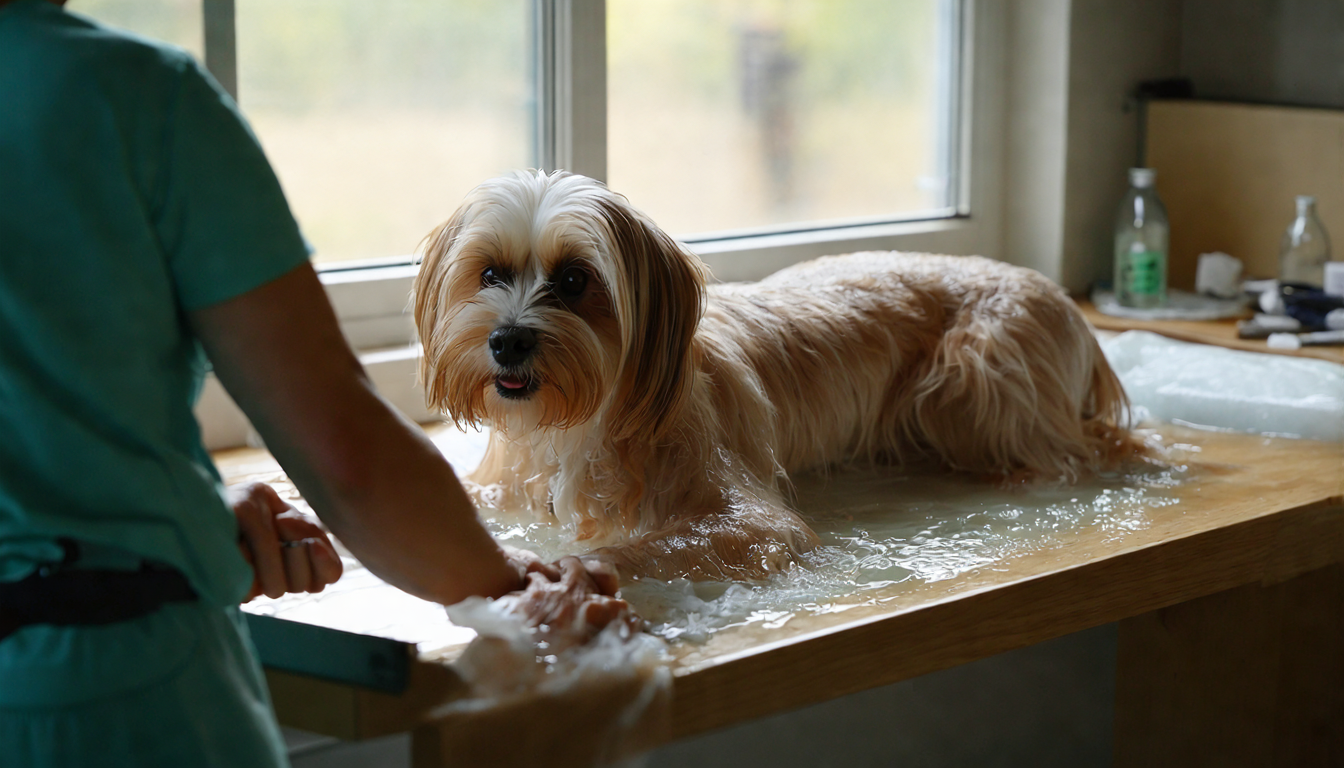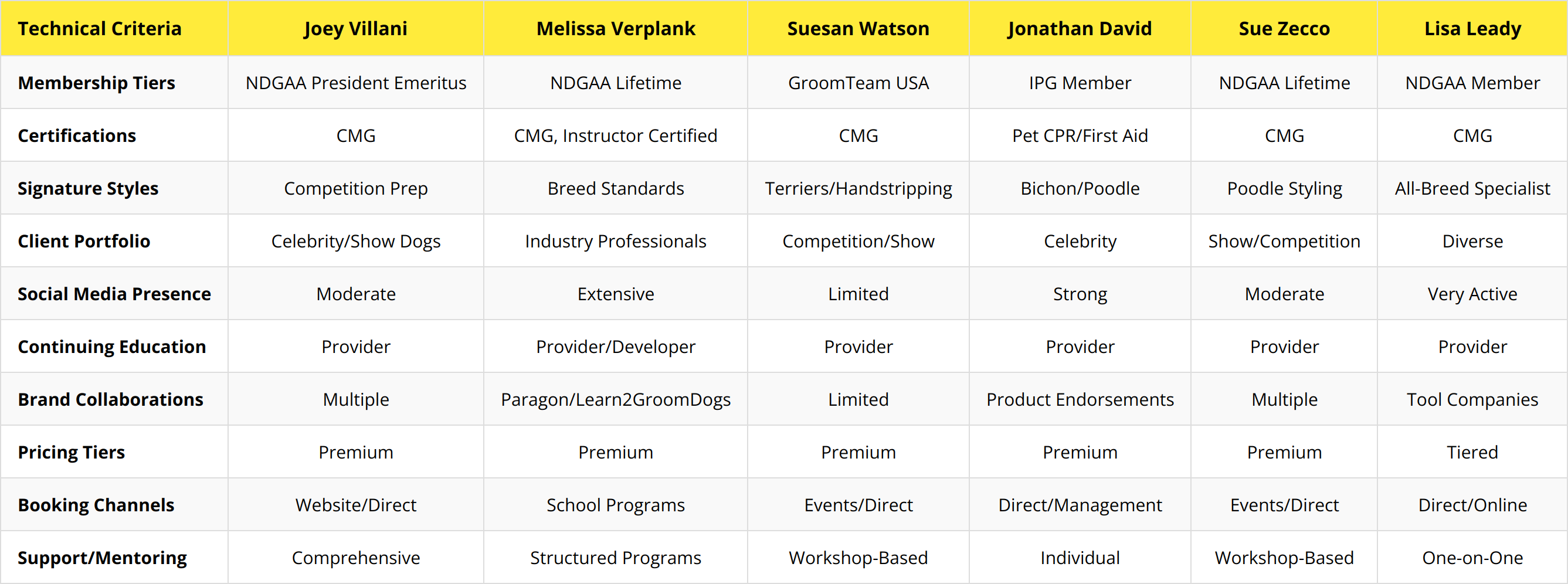Becoming a professional groomer is more than a passion for pets—it's a rewarding career that demands specialized skills, credible certification, and the right tools to deliver expert care. Mastery of breed-specific grooming techniques, combined with solid training and business savvy, distinguishes successful groomers in a competitive and growing industry.
From breed-specific cuts and safe animal handling to client management and pricing strategies, every aspect plays a vital role in building a sustainable grooming business. Understanding these elements not only bolsters your professional credibility but also maximizes earning potential and client trust.

Alt text: Professional grooming tools laid out neatly on a grooming table.
Professional grooming is a skilled trade, merging knowledge of animal care, styling artistry, and business acumen. To thrive as a groomer, mastering technical skills, securing accredited certifications, and equipping yourself with quality grooming tools are essential. Moreover, business proficiency—including client management and marketing—is crucial for sustaining and growing a grooming practice.
The career potential is substantial, ranging from working in established salons or mobile operations to launching private businesses. This guide unpacks the fundamental steps and insider tips to help you become a skilled professional groomer, equipped with the knowledge and tools to flourish.
Each breed has unique coat textures, growth patterns, and aesthetic standards. Understanding these breed-specific requirements ensures pets look their best while honoring breed characteristics.
“Shaping Dobermans with clean, sharp lines really emphasized their athletic build and kept clients happy,” shares a seasoned groomer, highlighting the importance of breed knowledge.
Safety is paramount—for both pets and groomers. Techniques to calm anxious or nervous animals include gentle restraint and soothing communication.
Adhering to hygiene standards and using appropriate grooming tools tailored to each pet ensures a stress-free, safe grooming experience.
These foundational skills demand attention to detail:
Common pitfalls include clipping too close to the skin or aggressive brushing, which can cause abrasions.
According to Clipit Grooming, "mastering these essential skills forms the foundation for advanced grooming success."
Accredited certifications elevate your professional standing by validating your skills against industry standards. Leading programs include:
Certification entails coursework in grooming theory, animal handling, safety practices, and practical exams.
Certification builds client trust and expands your employment opportunities. Many employers prefer or require certified groomers, who often command higher rates and enjoy avenues toward training others or managing salons.
A groomer noted, "Certification transformed my approach, giving me confidence and opening doors to reputable salons."
Selecting the best program requires thoughtful consideration of:
Robust programs blend theory with practical experience, helping build both skill and career confidence.
Explore certification options at Pet Business Startup Consulting, a valuable resource for aspiring professionals.
Quality, durable tools form the backbone of professional grooming:
Regular cleaning and maintenance ensure hygiene and extend equipment lifespan.
When shopping for tools, prioritize:
Balancing cost with long-term value is crucial—investing in professional-grade equipment pays dividends.
A well-designed grooming station incorporates:
Adherence to health and safety regulations protects pets and groomers alike.

Alt text: Efficient grooming workspace with organized tools and lighting.
To support your tool selection, review this comprehensive comparison chart that evaluates top grooming clippers based on features, pricing, and user feedback:

The Wahl Bravura and Andis UltraEdge clippers stand out for their precision, durability, and ergonomic design, making them top picks for professionals.
Consider adding Wahl Bravura Clippers to your essential kit.
Launching a grooming venture requires:
Having a clear business plan ensures a focused path to profitability.
Competitively pricing services demands market research and understanding local demand.
These practices enhance professionalism and client satisfaction.
Repeat business hinges on:
Build trust and rapport to foster client loyalty.
For detailed guidance on grooming business setup, visit PDGA's Expert Guide.
Choose schools with:
Accreditation by recognized grooming organizations is a strong indicator of quality.
Practical training cultivates confidence and technical proficiency. Mentorship programs offer:
A graduate shared, "Mentorship and networking from my training school propelled my career rapidly."
Reputable institutions often provide job placement services and community integration opportunities, including access to:
Explore further training and mentorship via Pet Business Startup Consulting.

Alt text: Grooming student practicing cutting techniques on a dog under supervision.
Typical rates vary by:
Basic baths may start at modest fees, while specialty styling commands premium pricing.
Consider:
A balanced strategy fosters client retention while ensuring steady profits.
The grooming industry evolves rapidly. Keep your skills fresh by:
Advanced certifications in creative grooming, show preparation, or specialty pet types elevate your marketability. Participating in competitions sharpens skills and enhances reputation.
Joining grooming associations and online communities expands your network. Mentoring newcomers or teaching workshops positions you as a respected industry leader.
Stay connected through events featured at Joey Villani Events.
How do I become a certified professional groomer?
Complete an accredited grooming certification program with practical training and exams. Certification validates your skills and unlocks career opportunities.
What tools do professional groomers need?
Essential tools include quality clippers, various scissors, brushes, grooming tables, and cleaning supplies to maintain safety and efficiency.
How much can a professional groomer earn?
Earnings vary, but average annual income ranges from $25,000 to $50,000, with potential duplicates through specialization or business ownership.
What are the best grooming schools for pet groomers?
Look for schools accredited by respected grooming bodies offering thorough curriculum and hands-on experience.
How do I set pricing for grooming services?
Base prices on market research, your skill level, and business costs. Use competitive but profitable rates and consider client loyalty programs.
Stepping into professional grooming opens a world where passion for pet care converges with real skill and business savvy. By mastering essential grooming techniques, earning accredited certifications, and equipping your workspace with professional-grade tools, you position yourself for sustained success.
Strong client management and continuous education further fortify your career, transforming enthusiasm into a thriving profession.
Begin your journey today by exploring reputable certification programs and grooming schools through Pet Business Startup Consulting.
“The art and science of grooming go hand in paw — your dedication to both will shape a fulfilling career that keeps pets looking and feeling their best. Every clip, brush, and client interaction plants a seed for growth—cultivate it boldly and watch your professional grooming journey flourish.”
By following this comprehensive guide, you are well on your way to a rewarding career as a professional groomer—equipped with skills, certification, and business insight to stand out and succeed.
Article crafted with expert insights and carefully integrated resources for aspiring and established pet grooming professionals.